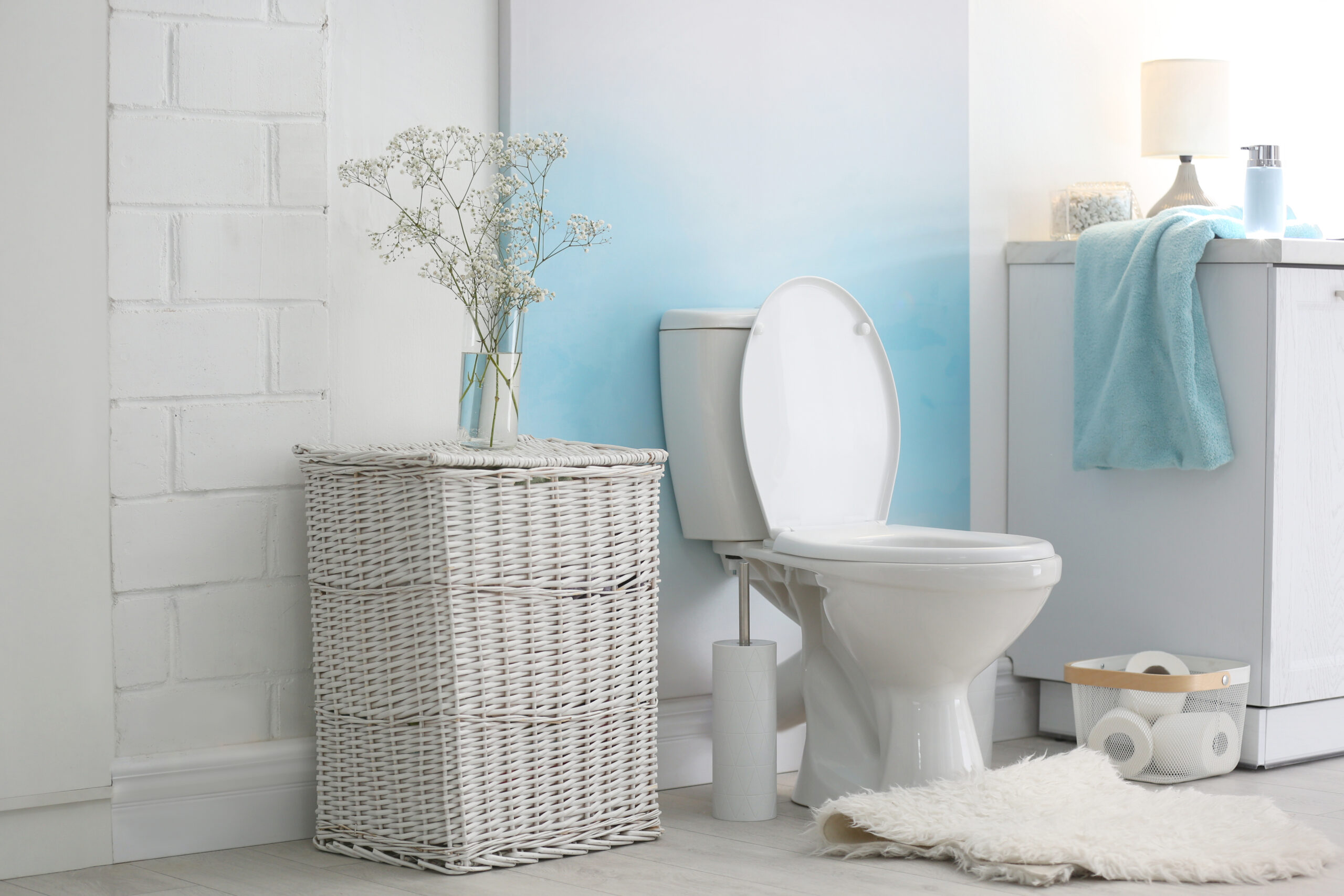Everything you need to know about your running toilet and how to fix it.
When you flush your toilet, does the water keep going and going long after? Are you tired of waiting around to see if your toilet will run or not? Do you keep having to mess with your toilet in different ways to get it to stop but it’s never a permanent fix?
A toilet that won’t stop running is one of the most common plumbing issues for homeowners. But there’s no need to worry! The good news is that in most cases, this issue is an easy fix.
4 Reasons Your Toilet Keeps Running
If you have a running toilet long after flushing, it usually boils down to four main reasons:
- The fill tube is disconnected.
- The toilet flapper is defective or doesn’t have a good seal.
- The fill valve or flapper chain isn’t the right length.
- The float ball isn’t where it should be (affecting the fill height).
What Does Each Part In Your Toilet’s Tank Do?
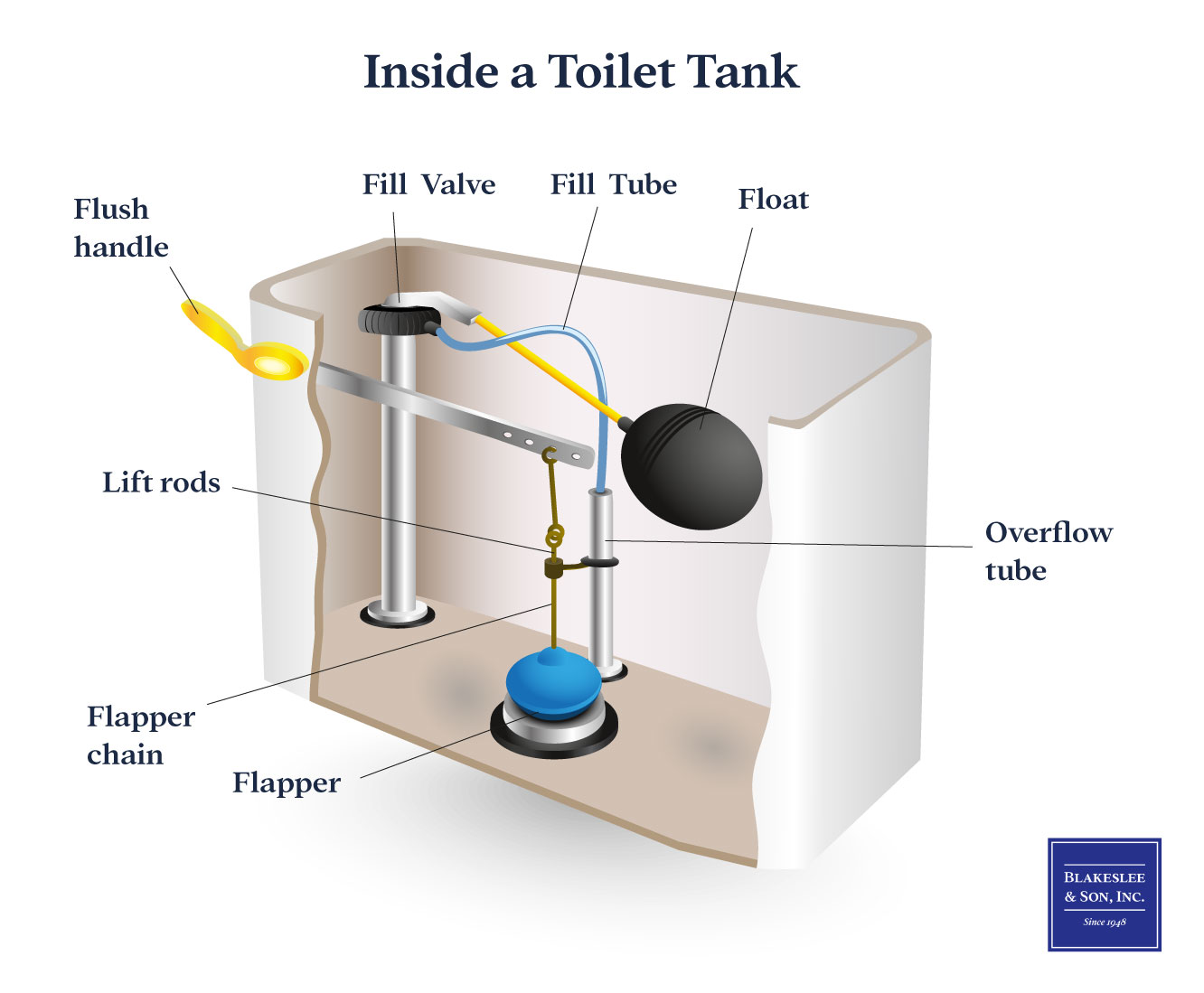
The Fill Valve: This part controls how much water flows from the tank and into the bowl. The chain that connects the fill valve to the handle should have some give to it, but not too much..
Flapper: This part is connected by a chain (or another mechanism) to your toilet’s handle and sits directly on top of the drain where water flows out through the overflow tube. The flapper sits just above this opening so that it can close when you flush and allow water into the bowl but not let it back out again.
The Flapper Chain: The flapper chain lets fresh water in and uses water out of the toilet system by opening up the flush valve. If the chain is too long or too short or gets caught underneath anything, it will struggle to perform this task.
Flush Handle: This part connects to the flapper and initiates the flushing process. If your handle seems to be in good working order, but doesn’t seem to do anything at all, then there might be a problem with the connection between the handle and the flapper.
The Float Ball: This part controls how much water is allowed into the bowl before it automatically fills back up.
The Fill Tube: The fill tube tells the overflow tube how much water to input into the bowl. Without a properly functioning refill tube, the toilet bowl will either have no water, or overflow with too much water.
Identifying and Fixing the Issue
1. A Disconnected Fill Tube
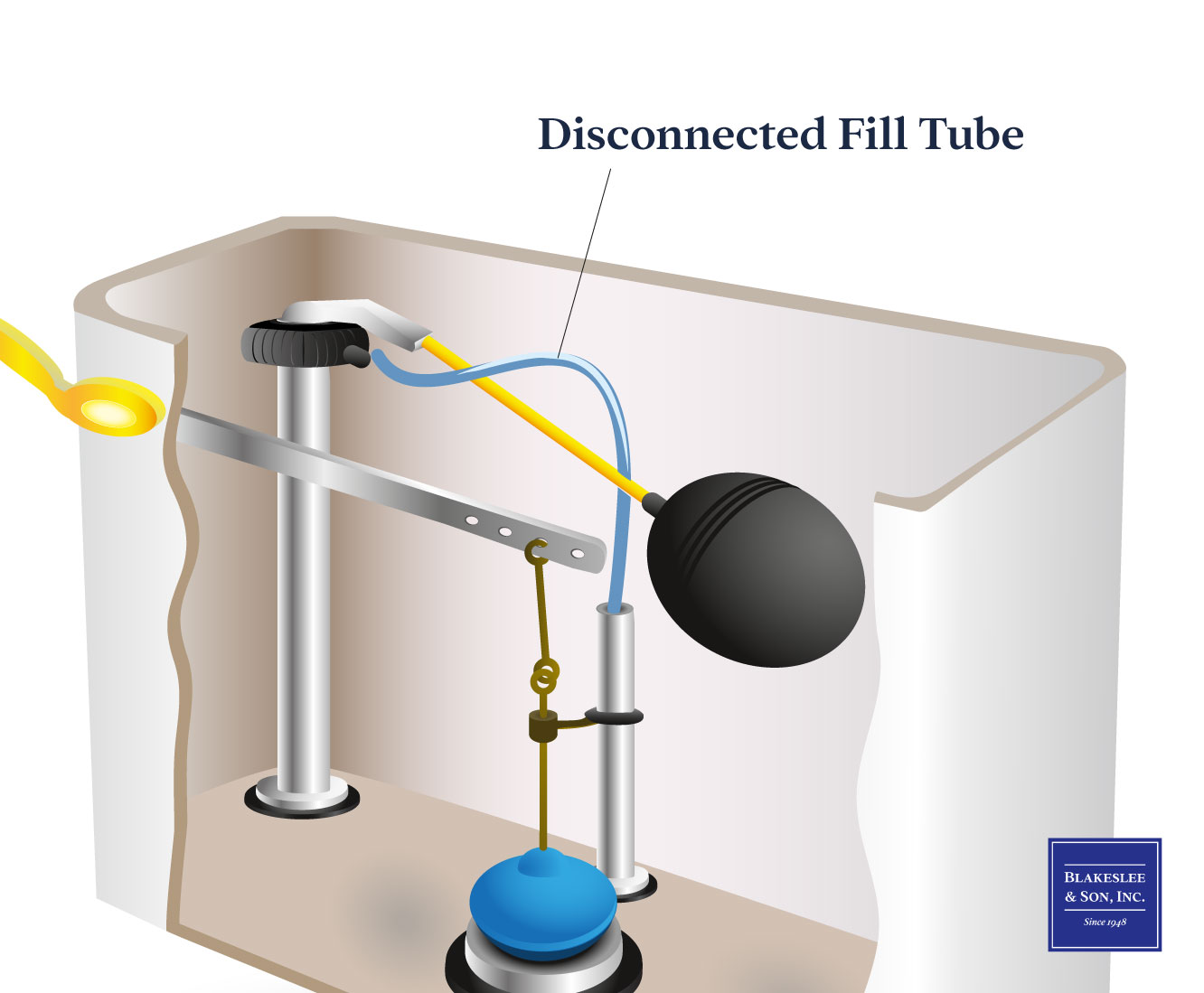
What to look for: A sign that your fill tube could be disconnected is if your toilet has a weak flush, or if your toilet bowl is not filling properly after flushing. You might also find that the stream of water doesn’t align with the flushing toilet’s water overflow tube.
Issue: The toilet won’t flush and may keep running without filling to the right level. It also won’t efficiently drain the water in the toilet bowl.
How to fix:
To fix the issue, all you need to do is reconnect the fill tube and the fill valve. When doing this, check that you don’t also have a faulty fill valve.
- Press both parts together firmly to secure them.
- Make sure the fill tube remains about an inch above the toilet overflow tube when this lets the remaining water out of the toilet.
- Once you’ve made these adjustments to the overflow tube, pull the toilet flush lever to check if the water pressure is now correct in your normal flush cycle.
- When you fully flush the toilet, watch that the water flow is going towards the toilet overflow tube. You should notice a stronger flush and water stream.
- Make sure you see the water level drain out of the bowl.
2. A Defective or Leaky Toilet Flapper

What to look for: You can check the flapper by opening up the tank lid and observing it inside. You will want to see if it has become dirty, warped, or broken.
Issue: If it isn’t in good condition, the flapper won’t create the suction effect necessary to close the water off after flushing and it will continue to run, resulting in a running toilet.
How to fix:
If you have a defective or leaky flapper, you’ll need to replace the flapper. Remember to turn off the water before you replace the flapper.
- Take the old one off the toilet and take it with you to the hardware store. This is so that you can buy the same model that fits your toilet. (If you struggle to find the exact flapper you need, it’s best to purchase a universal design. These can be used on a variety of toilet models, and they’re reasonably priced. You can also purchase “one size fits all” flappers online.)
- Once you get the new flapper, put it in and test that it works.
- If the water keeps running after you flush the toilet, this means the flapper does not seal properly. In this case, you will need to put in another one so that it seals properly.
- Sometimes it works better to replace the entire toilet overflow tube and flapper apparatus to ensure the system is properly sealed. If you can’t find a new flapper that seals, replacing the complete system can be a good alternative.
3. Incorrect Fill Valve or Flapper Chain Length

What to look for: You can check the chain by opening up the tank lid and observing it. First, make sure the chain is connecting the flush lever and the rubber flapper correctly. Next, shake the flush lever and see if there is too little or too much slack in the chain.
Issue: If the chain is too short, it could stop the flush valve from closing properly after flushing, resulting in constant running. If it’s too long, the chain won’t open the flapper when the lever is pushed.
How to fix:
- You’ll need to observe how the chain and flush valve work together when you flush your toilet and adjust the chain length accordingly.
- You may have to get a new length of chain from your hardware store if the chain is not long enough. If there’s too much chain, you can use the cutting pliers to trim it to the right length.
- Secure the chain properly before testing your handiwork. If the toilet continues to run, you may have to keep adjusting the chain until the length is optimized.
- Make sure you close the toilet tank securely once you’ve finished.
4. Incorrect Fill Height and Misplaced Floats

What to look for: Most toilets have an adjustable float that controls the water level in the toilet tank. You’ll see it immediately when you open the tank lid.
Issue: If the float is set low, the fill valve will not let in enough water to flush the system properly after use. If the float is too high, however, then the fill valve will let in water. You’ll see that excess water spills over into the toilet overflow tube. This results in a running toilet even after flushing.
How to fix:
- Look for the point at which the float is level.
- Mark the point on your toilet overflow tube.
- Flush and observe if the system pulls water up to the mark you just made.
- If it doesn’t reach the mark near the fill valve, adjust the float down or up as needed, using the mark as a guide.
- In older toilets, you’ll need to adjust the float cup by bending the metal rod or float arm attached to it. But in newer toilets, push the floater clip, or turn the screw of the flush rod.
- Keep adjusting the rod until the water supply stops running and the tank empties and refills from the fill valve.
- You can then let the water level get to a point that’s at the minimum of one inch beneath your level mark inside the tank. You can also set the toilet fill valves to decrease or increase to this point.
In some cases, the float ball itself can be the issue. In this case, you’ll need to replace the old system in the tank with a new float ball or brass rod to achieve the right float height. Parts can easily be found at most stores and can be replaced in a few minutes.
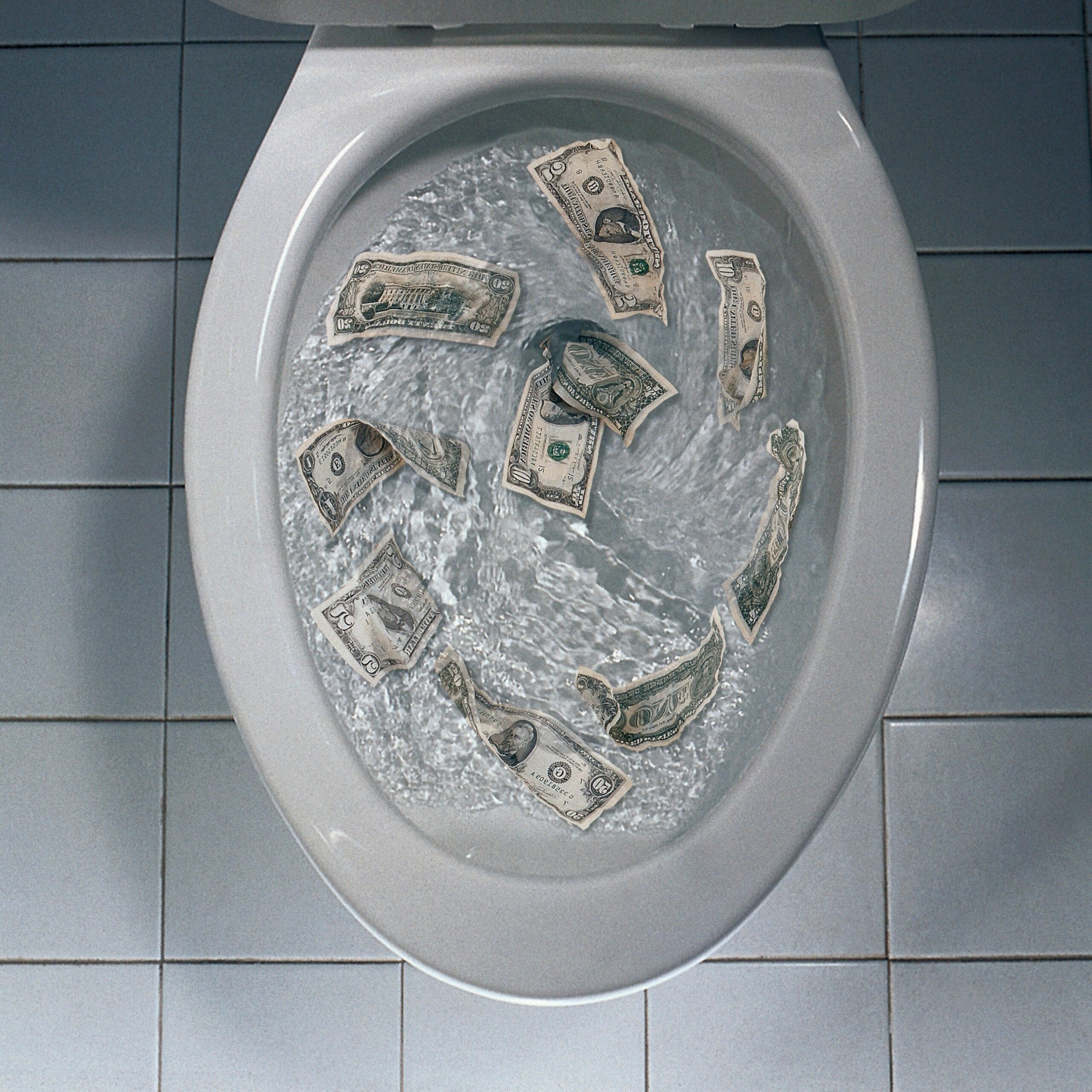
FAQs
Does a running toilet waste water?
All toilet leaks cause wasted water. Depending on your home’s water pressure, a running toilet could leak over one gallon of water per hour. This is almost one unit of water a month. If left undiscovered or untreated, a running toilet can waste almost 13 units of water a year.
Can a running toilet cause water damage?
A constantly running toilet could potentially lead to flooding. You might find water damage on the bathroom floor or even outside on surfaces like your patio or driveway.
Will a constantly running toilet increase my water bill?
The most common cause of a high water bill is running toilet water. A slow leak can waste up to 30 gallons a day while keeping you oblivious to the problem. On the other hand, a medium leak is more noticeable and could go through roughly 250 gallons and $3.30 a day. This can cause a terrible increase to your family’s typical water use.
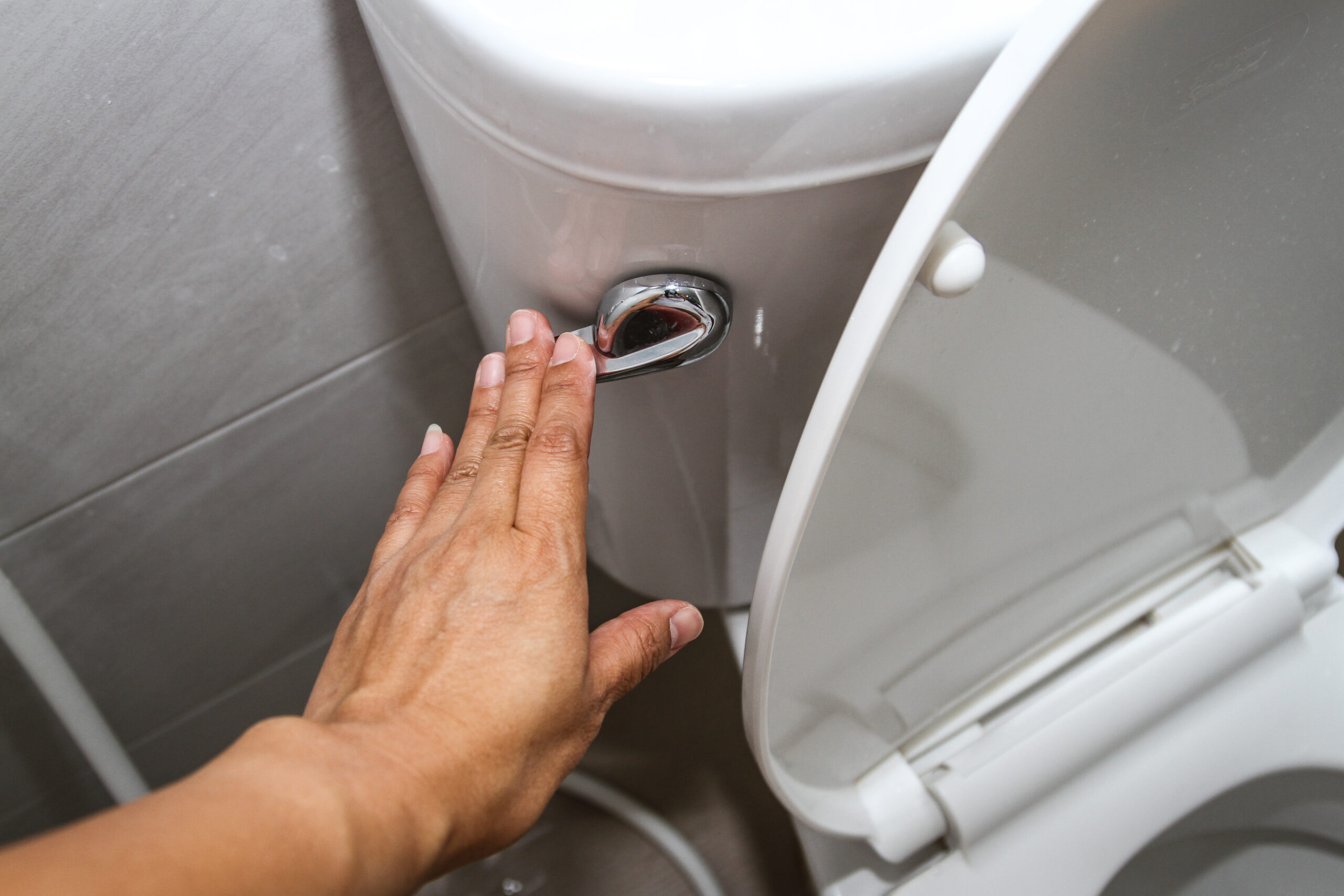
Plumbing Services at Blakeslee & Son
A constantly running toilet can cause a lot of damage, but we hope that these guidelines help you fix the issue with ease. However, if you find you are still having issues with your running toilet, then we strongly advise giving us a call and we will send over an expert plumber to solve all your plumbing needs!
Blakeslee & Son provides plumbing services throughout West Michigan.
Call us or reach out to us on our website for assistance with your plumbing needs this spring!


